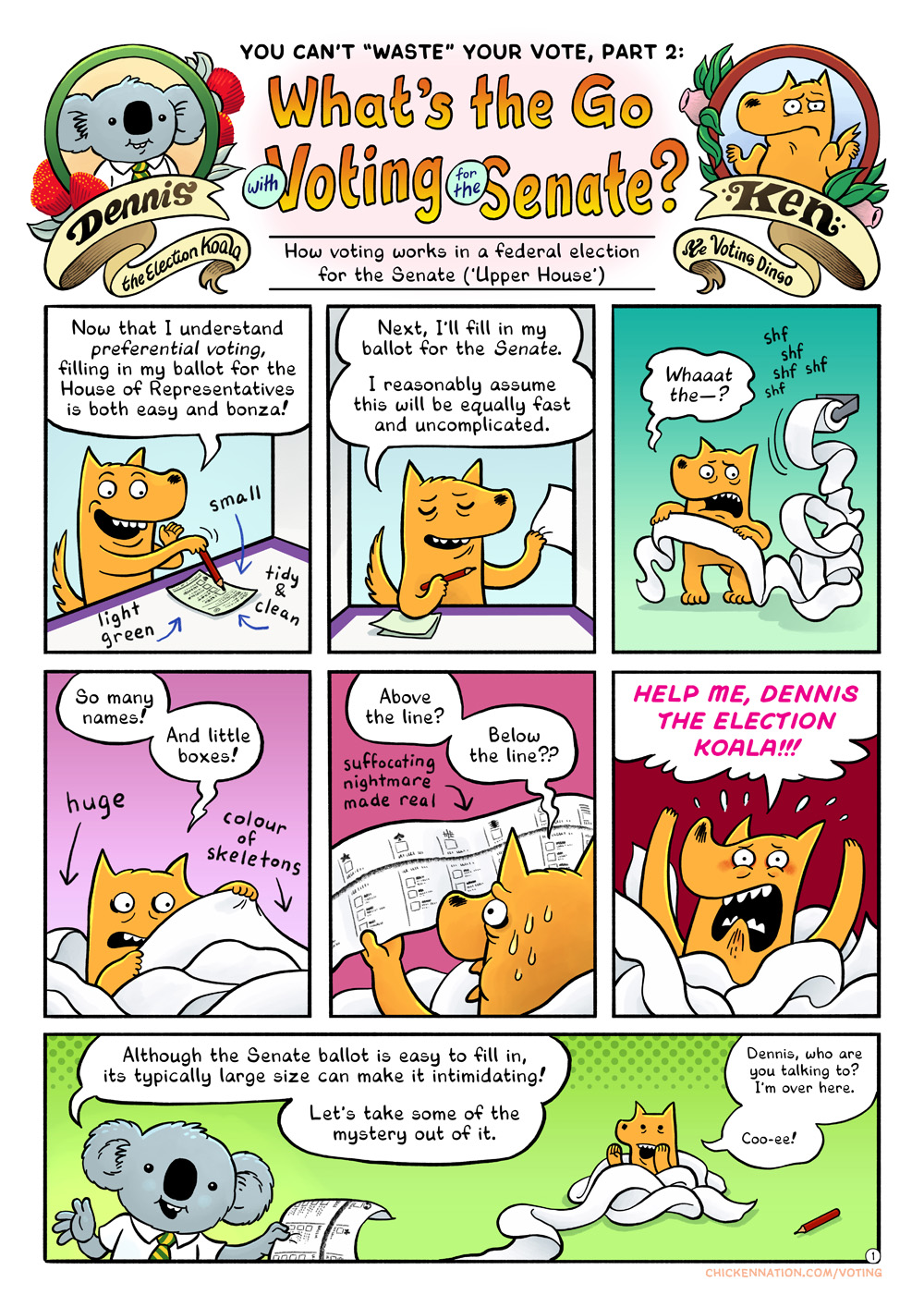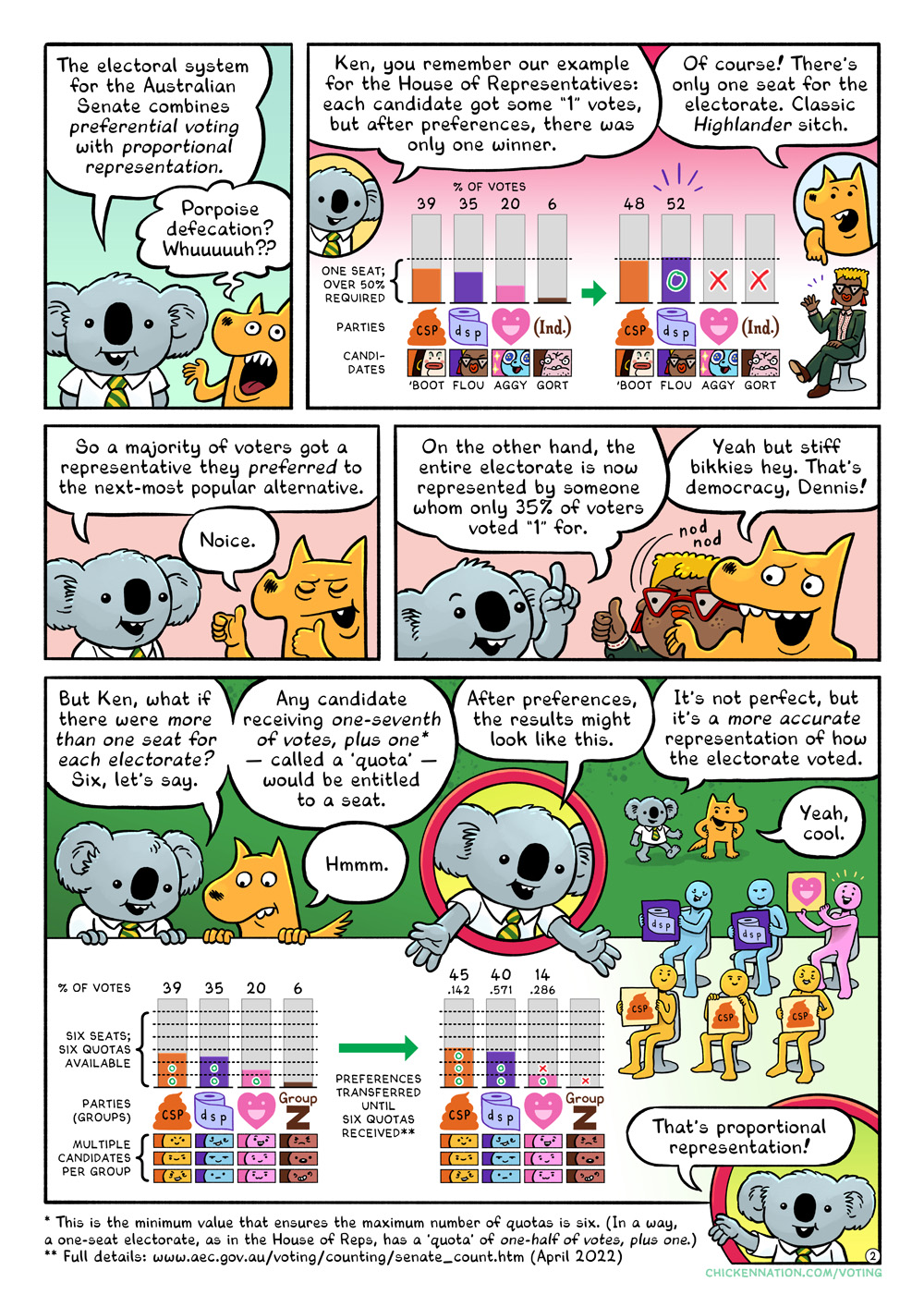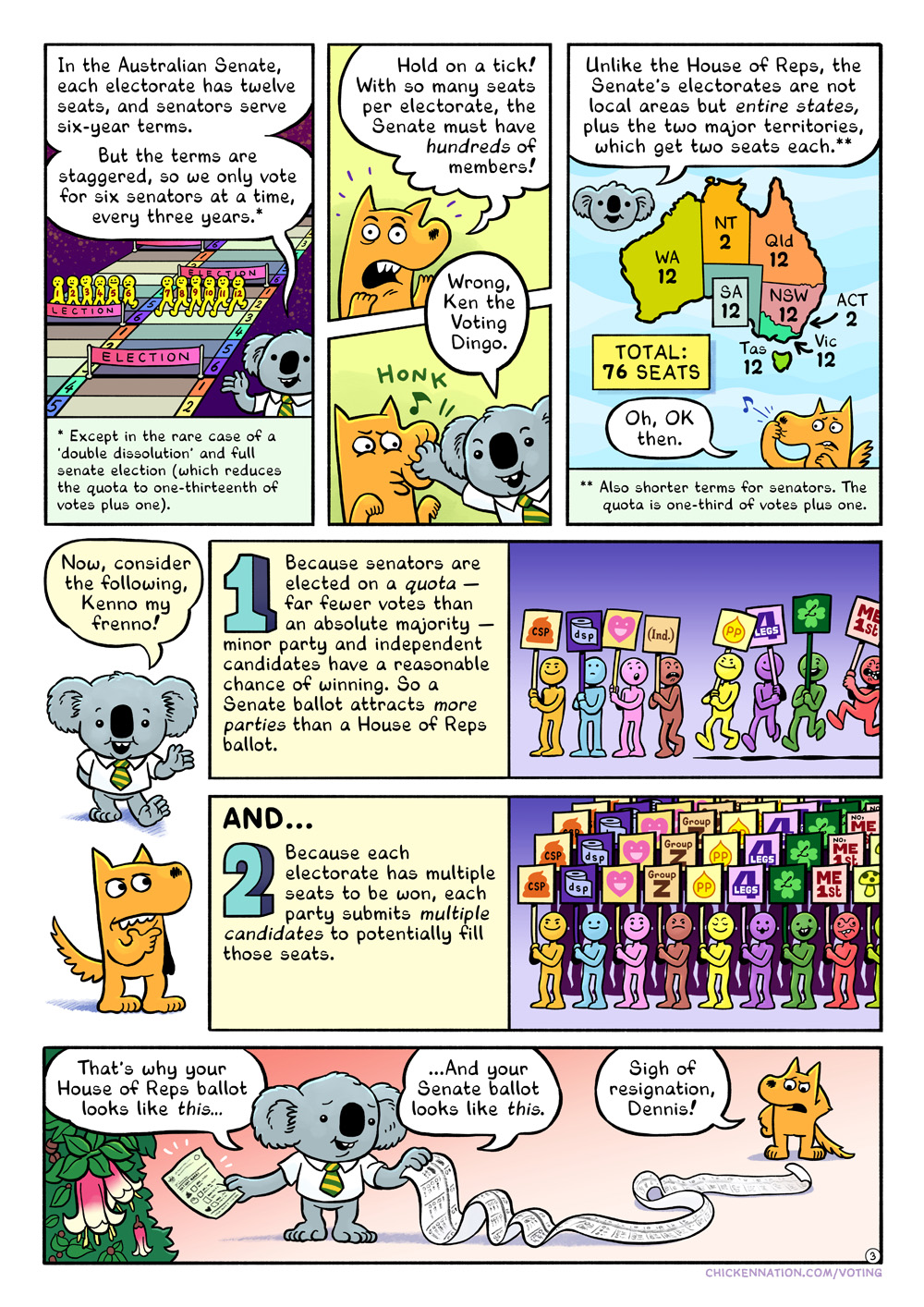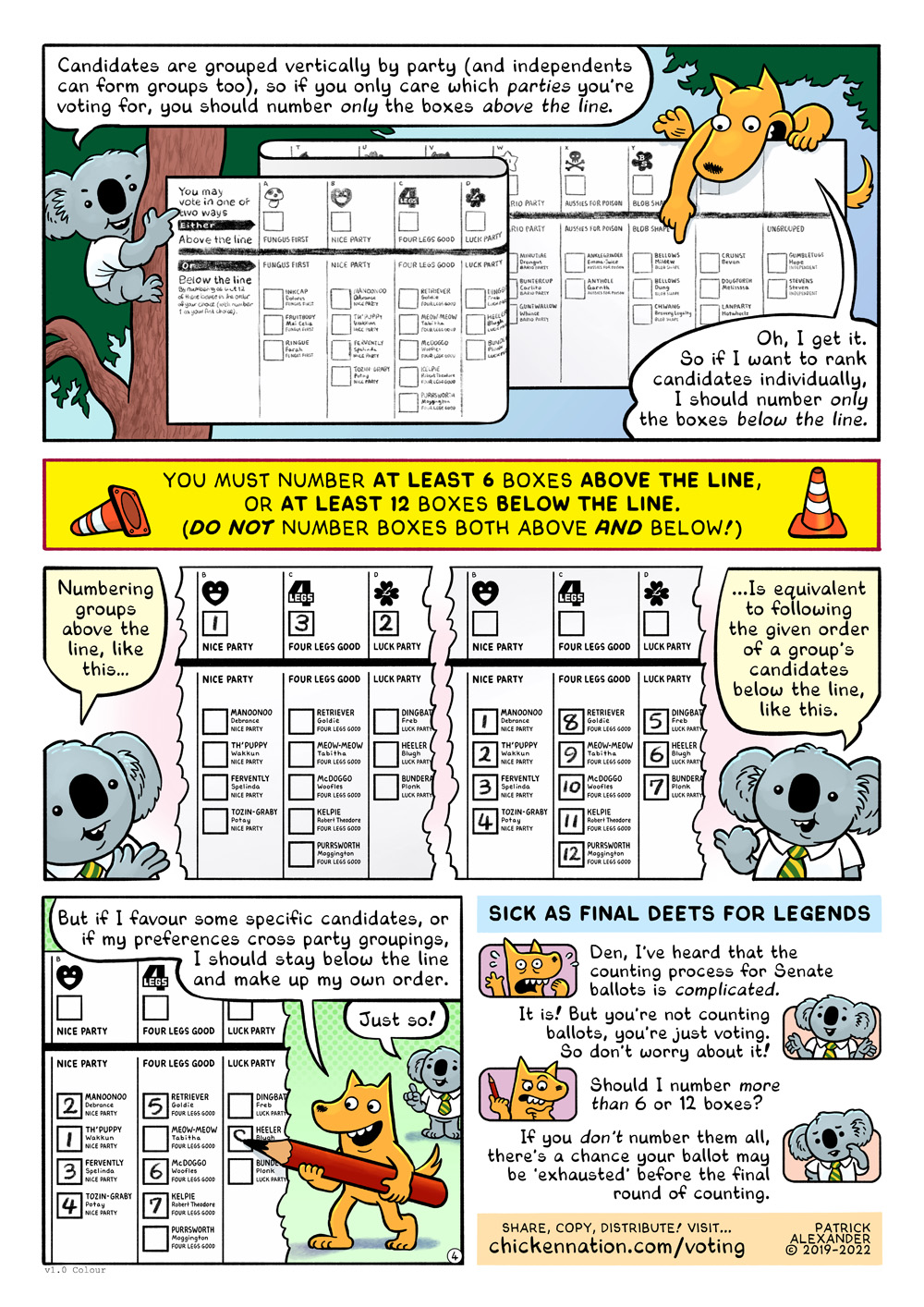Preferential voting meets proportional representation! Ken the Voting Dingo receives a second lesson in civics from Dennis the Election Koala. (If you haven’t read the first comic yet, do that now I reckon.)




Share this comic
Where I’ve posted it: Twitter | Imgur | Instagram | Tumblr
As with the previous comic, you are encouraged to share this online and in print. Here are the files you need.
The PDFs are suitable for offset printing as well as home printing. The black-and-white version is just that: black and white — not merely a greyscale version of the colour comic. It’s great for cheap, ordinary photocopying. Check it out!
| JPG, 1000 pixels wide (for web sharing) | Page 1, Page 2, Page 3, Page 4 |
| PDF for colour printing (CMYK) | Download (26.6 MB) |
| PDF for black-and-white printing | Download (8.6 MB) |
Support this project by supporting its creator.
This much-requested comic took weeks of work to produce, in fits and starts over three busy and difficult years. No-one paid me to make it; no political party has sponsored it, nor any other organisation. If you believe it has value, and would like the work to continue, please help to make it worth my time. Thank you!
Notes on the Senate voting comic
Every aspect of the electoral system for the federal Senate, from the mechanics of multi-member seats to the ballot paper itself, is more complex than for the House of Representatives. Choosing which information to include in this comic, and of that, which to explain and which to merely refer to, took some lengthy head-scratching, lock-twirling, and chin-rubbing — let alone getting a confident grasp of all that information myself, let alone fitting it all into four pages. (That last point was essential, though: the comic must fit on a single sheet of folded paper, so anyone can easily print and distribute it.)
In the end I decided the best approach was to make this comic a general primer, addressing the most common questions and frustrations that Australian voters, old and new, express about the voting process for the Senate. Even that mere goal resulted in a comic more wordy and tightly-packed than its predecessor, though I think still entertaining, comprehensible, and, um, legible?
Anyway, it doesn’t delve into the mechanics of how the Senate vote is counted, which means that some readers may have one leftover botheration; one itch left unscratched: “What’s this we hear, sometimes, about Senators being elected on mere fractions of votes? What’s that about? How can it be? Is it not against the Lord’s plan?”
Readers, I was not blessed with a natural gift for the mathematical, and the good news is: this stuff about fractions of votes is not terribly difficult to understand. The bad news is, it requires several steps of explanation, so there was no room for it in this comic. It would require another comic altogether — though actually I think the comic medium is not ideally suited to it, and animation would be a far better choice. (I am not an animator, however.)
Anyway, I decided that including the relevant URL for the AEC’s own webpage on the topic, in the footnotes of page 2, would be sufficient for the deeply inquisitive. And I’m happy to report that sometime between April 2019, when I made that decision, and April 2022, when I finalised the comic, a humble, unassuming link was added to the top of that webpage: the words ‘Senate count process’ in small type, leading to a two-page PDF that is an absolute work of art, with beautiful, intricate-yet-clear diagrams that must be seen to be appreciated. I’m sure you’ll find them helpful if you have the time to invest — but at the very least, you will be impressed.
For the sake of voting, of course, all you really need to understand is this: number the candidates or groups in the order you prefer them. Dead easy.
